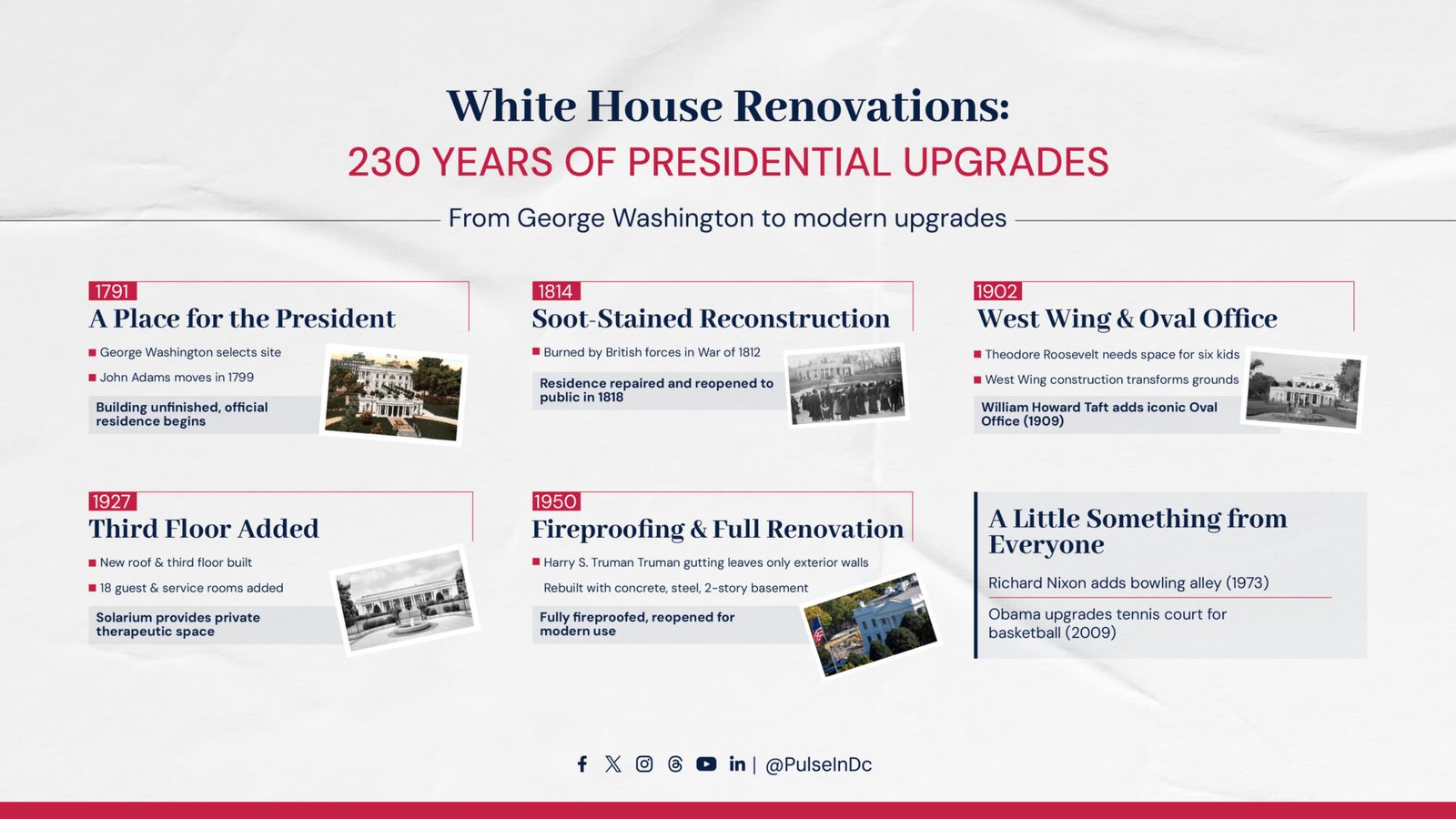
White House Renovations: 230 Years of Presidential Upgrades
The White House, the iconic residence of U.S. presidents, has been continuously evolving since its inception in 1791 when George Washington selected the site.
John Adams became the first president to occupy the unfinished building, setting the stage for centuries of adaptations and expansions.
After the British burned the building in 1814 during the War of 1812, it was fully restored by 1818, with myth-busting clarifications about its name.
Theodore Roosevelt’s family needs prompted the construction of the West Wing in 1902, followed by William Howard Taft’s expansion of the Oval Office in 1909.
In 1927, a third floor and rooftop Solarium were added, providing both guest space and private amenities for the First Family.
President Truman undertook a complete fireproofing renovation in the 1950s, leaving only the exterior walls intact while reinforcing the structure with concrete and steel.
Since then, each president has contributed their own additions, from Nixon’s one-lane bowling alley to Obama’s upgraded tennis court that doubles as a basketball court, reflecting both functional needs and personal tastes.
Over 230 years, these renovations have made the White House not just a home and office, but a living record of U.S. presidential history, architectural innovation, and cultural evolution.

